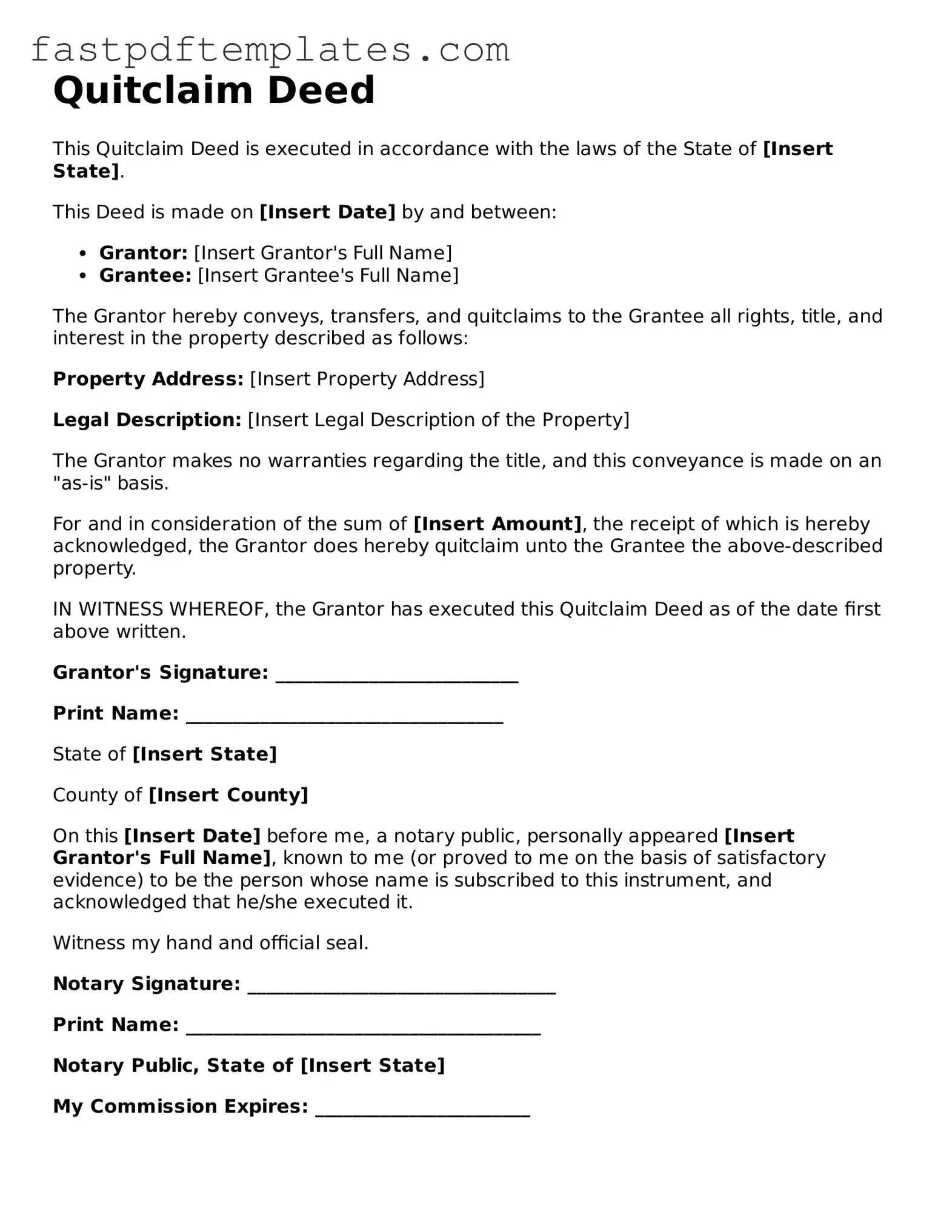Quitclaim Deed
This Quitclaim Deed is executed in accordance with the laws of the State of [Insert State].
This Deed is made on [Insert Date] by and between:
- Grantor: [Insert Grantor's Full Name]
- Grantee: [Insert Grantee's Full Name]
The Grantor hereby conveys, transfers, and quitclaims to the Grantee all rights, title, and interest in the property described as follows:
Property Address: [Insert Property Address]
Legal Description: [Insert Legal Description of the Property]
The Grantor makes no warranties regarding the title, and this conveyance is made on an "as-is" basis.
For and in consideration of the sum of [Insert Amount], the receipt of which is hereby acknowledged, the Grantor does hereby quitclaim unto the Grantee the above-described property.
IN WITNESS WHEREOF, the Grantor has executed this Quitclaim Deed as of the date first above written.
Grantor's Signature: __________________________
Print Name: __________________________________
State of [Insert State]
County of [Insert County]
On this [Insert Date] before me, a notary public, personally appeared [Insert Grantor's Full Name], known to me (or proved to me on the basis of satisfactory evidence) to be the person whose name is subscribed to this instrument, and acknowledged that he/she executed it.
Witness my hand and official seal.
Notary Signature: _________________________________
Print Name: ______________________________________
Notary Public, State of [Insert State]
My Commission Expires: _______________________
